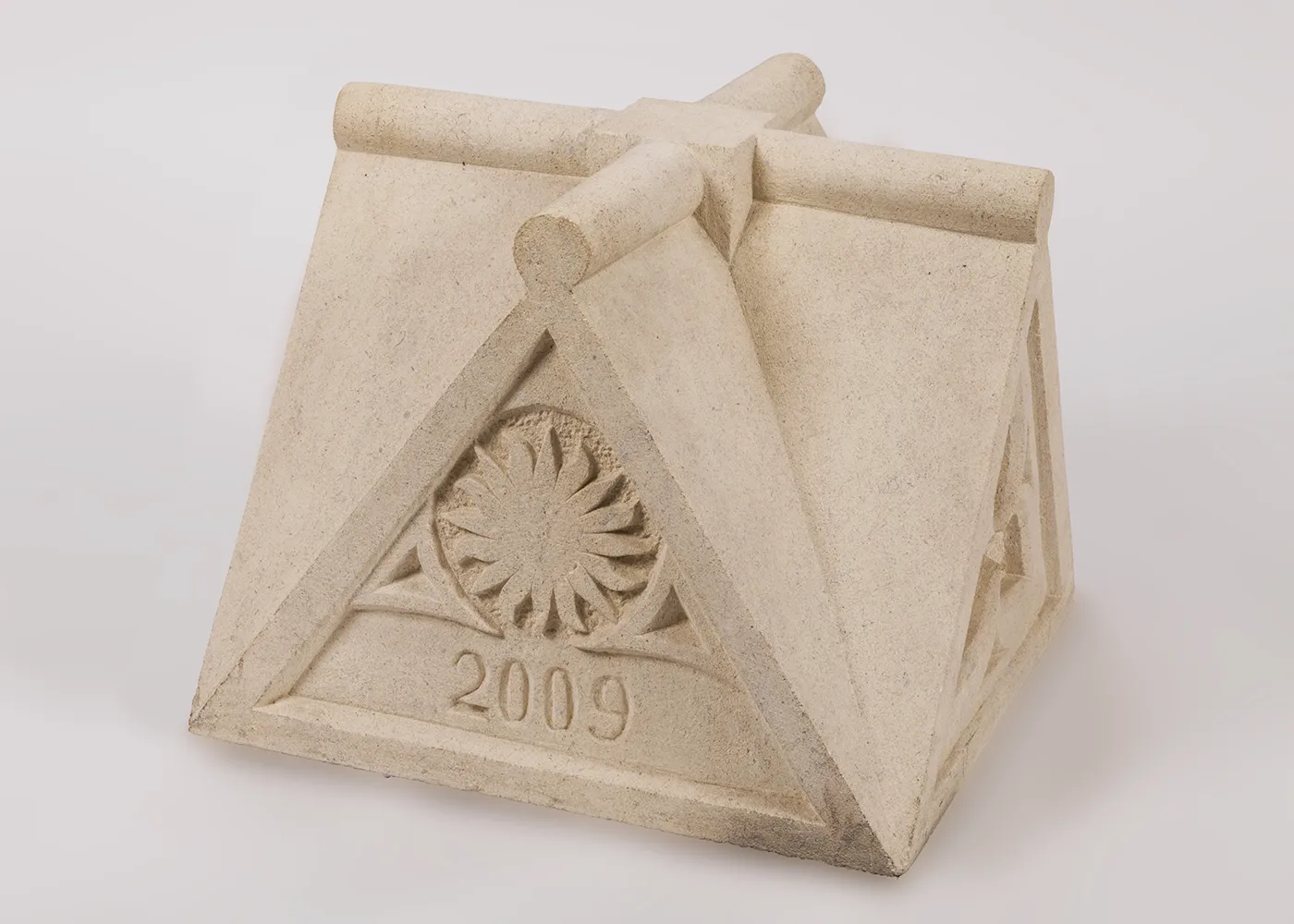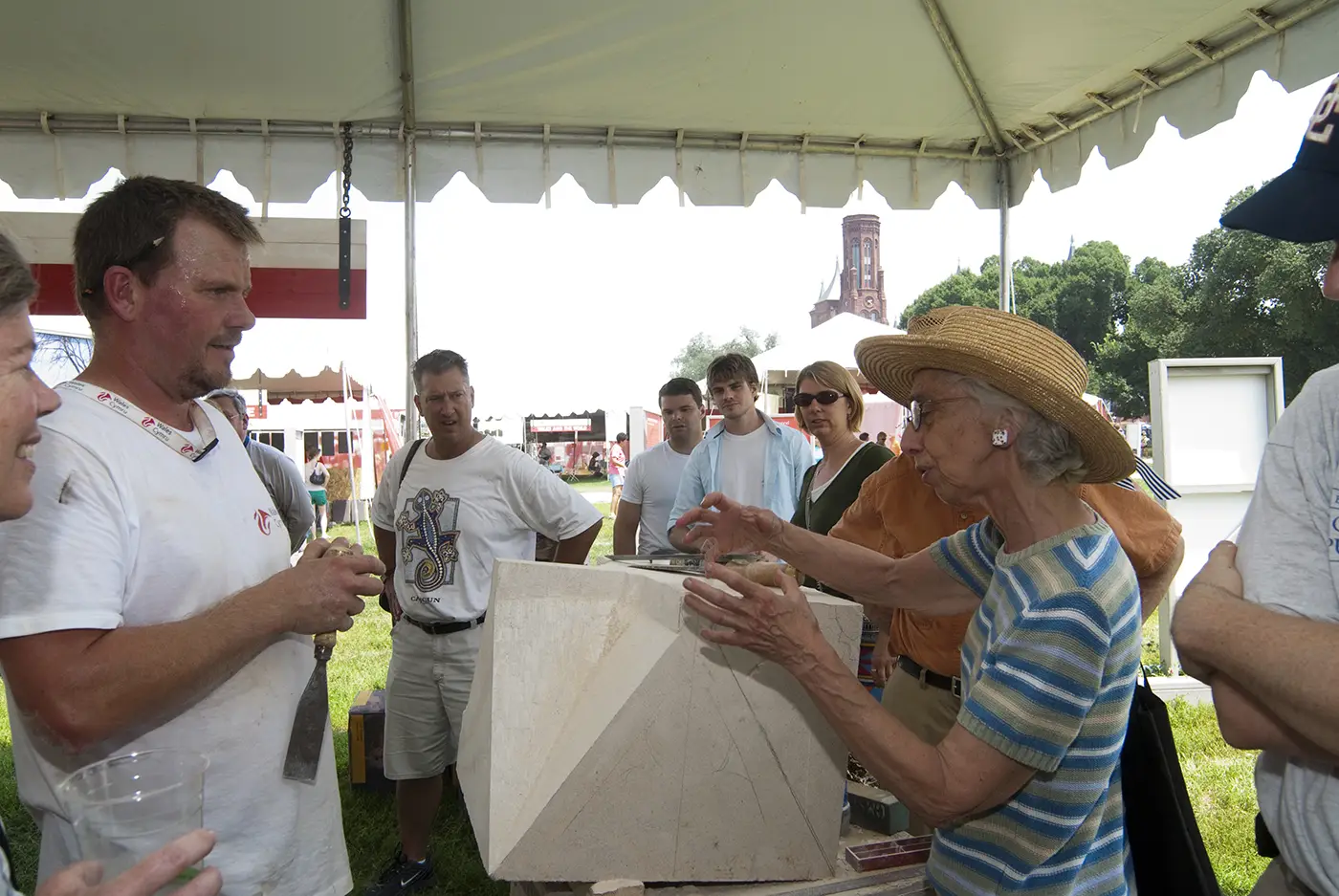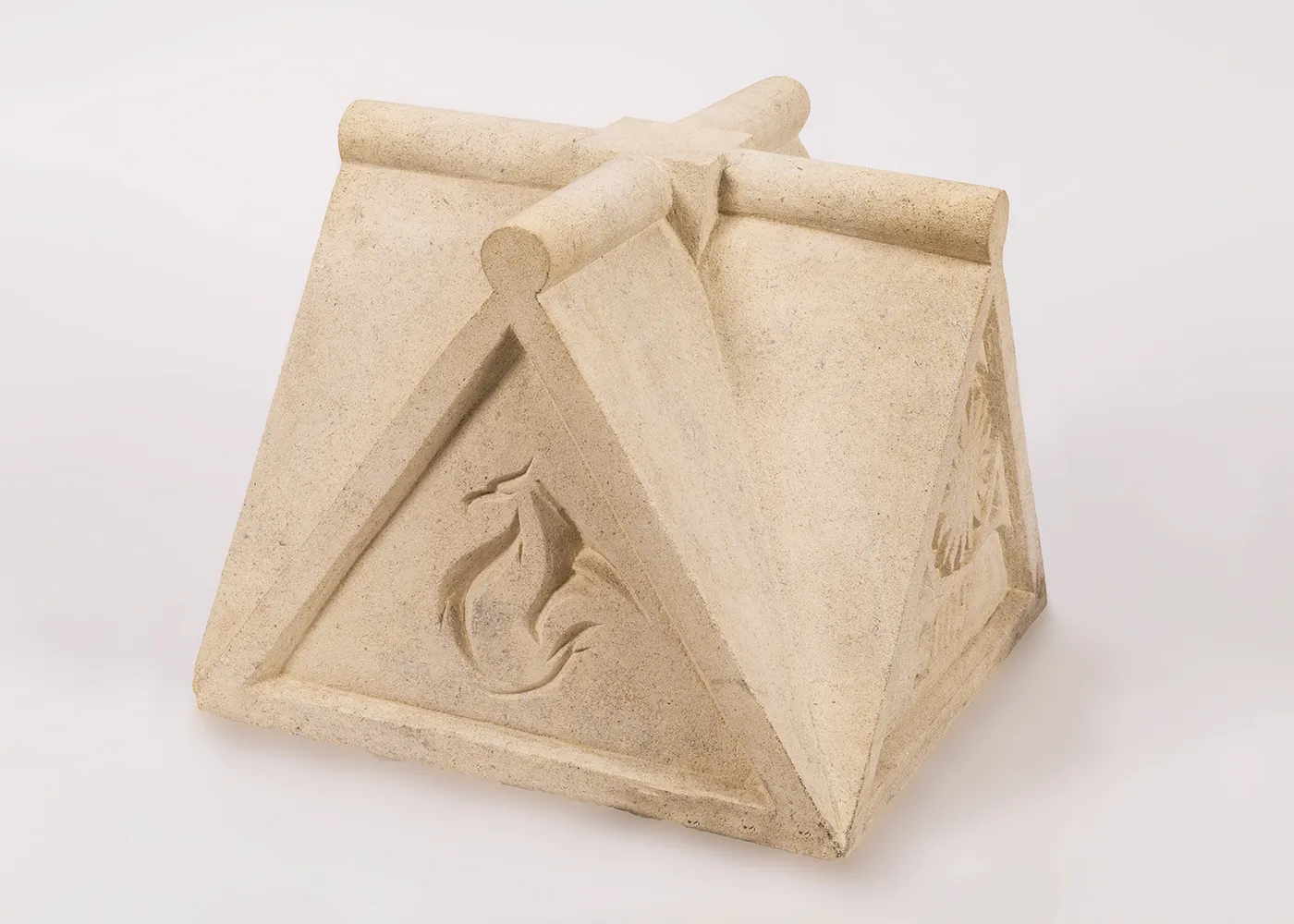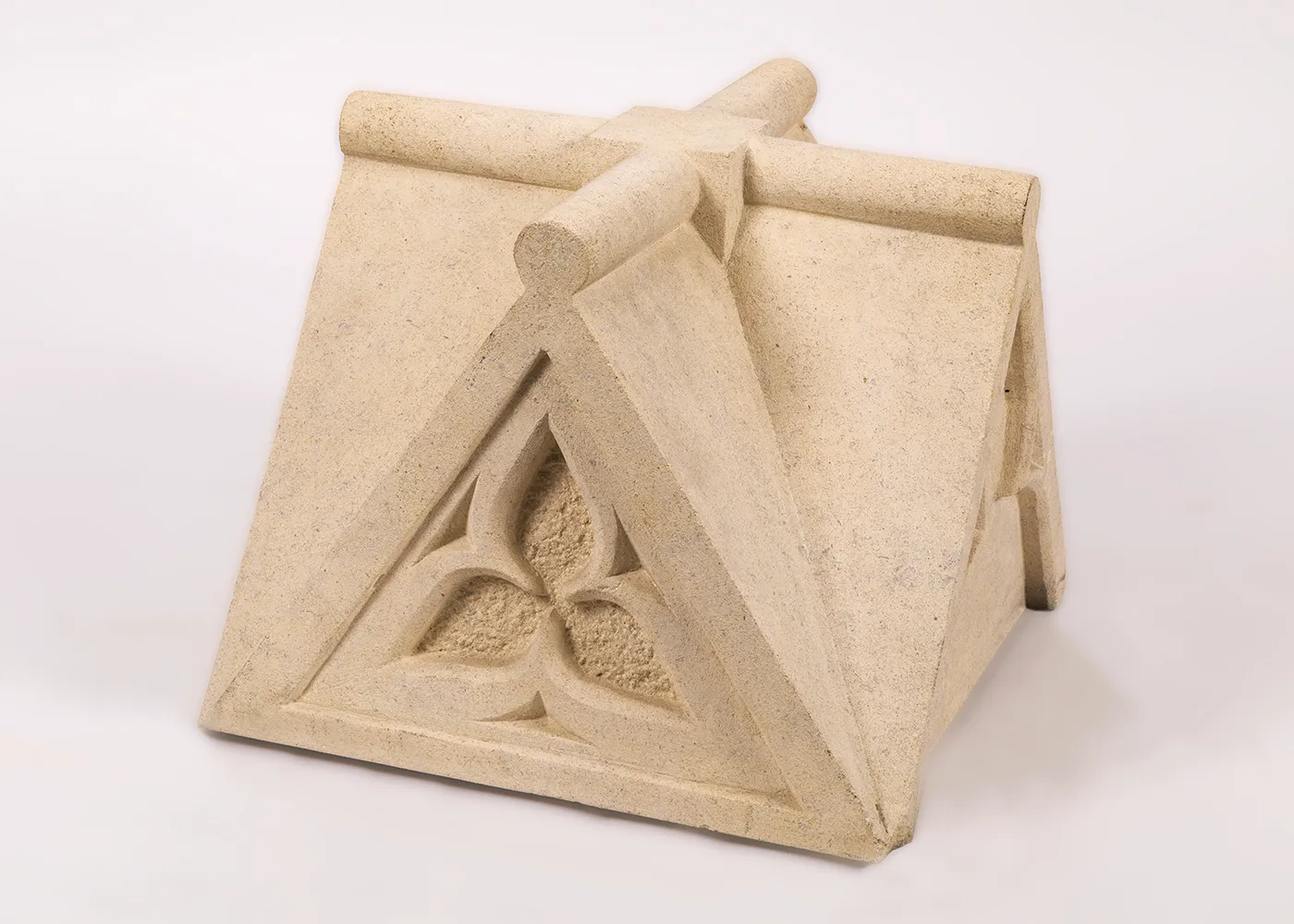Welsh Apex Stone
A stonemason passionate about his calling
Master stonemason Selwyn Jones, an expert in restoring Welsh architecture, carved this apex stone during the 2009 Festival. By all accounts, he was a highly skilled participant and a captivating presenter. His tent was always filled with people watching him work, asking questions, and trying their hand at chiseling and carving the stone.
The Wales Smithsonian Cymru program was built around the theme of sustainability. Centuries of tradition, change, and innovation have resulted in Wales’s current reputation as a world leader in sustainable practices. Few things in architectural practice are more sustainable than historic preservation—an endeavor that maximizes the use of existing materials, reduces waste, and helps preserve the identity-giving character of a community and its institutions. As curator Betty Belanus wrote in the program book, “sustainability is built upon the rediscovery and reinterpretation of older practices.” Understanding those traditions instills pride in the past and can hold solutions to challenges communities face today.
With more than forty years of experience, Selwyn Jones is adept in many areas of stonework. He first trained as a metal sculptor, then apprenticed with a stonemason. In his own words, he is “passionate about traditional skills” and openly shares his enthusiasm with others. Restoring historic buildings gives them new life and being part of that process connects Jones directly to the roots of his heritage.
“Anything to do with stone, we can restore it,” Jones explained at the Festival. This can include taking a building completely down and rebuilding it, replacing a few stones, or—as in the case of an apex stone—replicating the shape and design of that distinctive church feature. The four-pointed apex is made of English limestone, a building material known for its tight, smooth grain that “holds the cut well.” The layout allowed him to work on all sides of the stone. He encouraged both men and women to help chip out stone, noting: “You don’t need physical strength, but you do need patience!” Many who tried their hand at carving stone at the Festival would agree! In addition to the Smithsonian Sunburst, the finished stone holds a Welsh dragon, two cusps (the points where the curved scallops meet), and a trefoil (three-lobed plant design). The last two are Christian symbols that often appear on apex stones.







